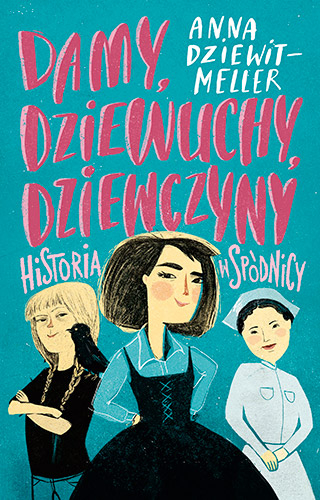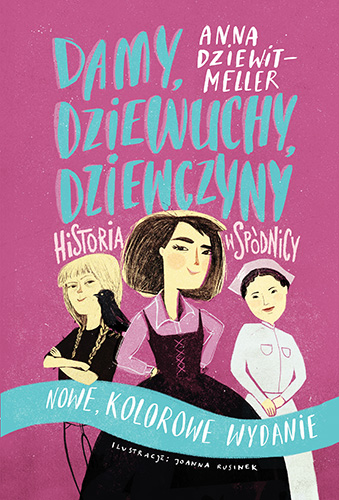Author: Anna Dziewit-Meller
Illustrator: Joanna Rusinek
Year: 2017
Publisher: Znak
Place of publication: Kraków
Pages: 155
ISBN: 9788324046201
Notes: Second edition with illustrations in colour in 2020 (A. Dziewit-Meller, Damy, dziewuchy, dziewczyny. Historia w spódnicy, il. J. Rusinek, Kraków: Znak, 2020, pp. 155, ISBN: 9788324052349).

Cover courtesy of the publisher. ©SIW Znak sp. z o.o., 2017 
Cover courtesy of the publisher. ©SIW Znak sp. z o.o., 2020
This tour of Polish women’s biographies – some more famous, some less – is guided by Anna Henryka Pustowójtówna (1838–1881), a participant of the January Uprising in Poland. Heńka, as the narrator calls herself, introduced the reader to such historical figures as Queen Jadwiga (1374–1399), art collector Izabela Czartoryska (1746–1835), two-times Noble Prize winner Maria Skłodowska-Curie (1867–1934), painter Zofia Stryjeńska (1891–1976), World War Two spy Krystyna Skarbek (1908–1952) or mountain climber Wanda Rutkiewicz (1943–1992). The narrator Heńka is porte parole for the book’s author, Anna Dziewit-Meller, who uses modern language to address her reader, emphasizing the emancipatory attitudes of her characters and encouraging her young female readers to reach the most daring of goals.
One chapter is devoted to “the greatest heroes”: Stefania Wilczyńska and Irena Sendler. The former is presented as Janusz Korczak’s collaborator at the Orphanage, which was transferred to the Warsaw Ghetto upon the ghetto’s creation. Wilczyńska and Korczak looked after the children, procured food for them and conducted classes, thanks to which the children could forget about the war. Meanwhile, Sendlerowa is described as an unassuming woman who – along with others, such as Jan Dobraczyński, Irena Schultz and Jadwiga Piotrowska – managed to rescue 2500 Jewish children from the ghetto. Dziewit-Meller writes (p. 130): “people such as Stefania Wilczyńska, Irena Sendlerowa, or Janusz Korczak simply must be remembered.”